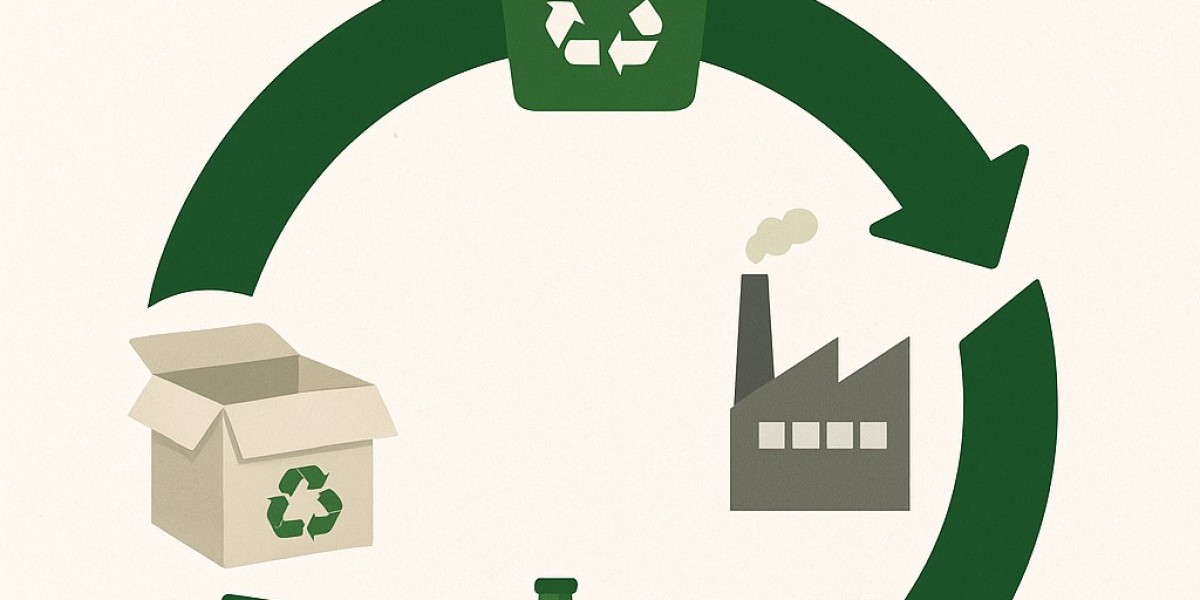As the world faces increasing environmental challenges, industries and consumers are shifting towards sustainable solutions that reduce waste and conserve resources. Among these innovations, Closed Loop Recycling has emerged as a revolutionary s.ystem that promotes a circular economy — one where materials are continuously reused, rather than discarded. Unlike traditional recycling methods that degrade materials over time, Closed Loop Recycling maintains the integrity and value of materials, making it one of the most effective ways to minimize environmental impact.
What is Closed Loop Recycling?
Closed Loop Recycling is a process where waste materials are collected, reprocessed, and reused to make the same product again without significant degradation in quality. In simple terms, the material goes through a continuous cycle of use and regeneration — reducing the need for virgin raw materials.
For example, aluminum cans can be melted down and reshaped into new cans repeatedly without losing quality. Similarly, glass bottles, certain plastics, and metals can all undergo Closed Loop Recycling, creating a sustainable loop of production and reuse.
This process contrasts with open-loop recycling, where materials are recycled into different products that eventually end up in landfills. Closed Loop Recycling, on the other hand, ensures materials stay within the production cycle indefinitely.
How Does Closed Loop Recycling Work?
The Closed Loop Recycling process involves several steps designed to ensure efficiency and sustainability:
Collection:
Used products or materials are collected from consumers, businesses, or recycling centers.Sorting and Cleaning:
Recyclable materials are sorted by type and cleaned to remove contaminants.Reprocessing:
The clean materials are broken down into raw components — for example, metals are melted, plastics are reformed, and paper is pulped.Remanufacturing:
The recycled raw materials are used to manufacture new products of the same type as the original.Redistribution:
The new products are distributed back into the market, completing the “closed loop.”
Through this process, Closed Loop Recycling minimizes waste generation and significantly lowers the demand for new natural resources.
Examples of Closed Loop Recycling in Action
Aluminum Cans:
One of the most successful examples of Closed Loop Recycling is the aluminum can. Nearly 75% of all aluminum ever produced is still in use today, thanks to its infinite recyclability.Glass Bottles:
Glass can be recycled endlessly without losing purity or quality, making it ideal for closed-loop systems in the beverage industry.Plastics:
Certain types of plastics like PET and HDPE are being innovatively reprocessed into new bottles and containers through Closed Loop Recycling technology.Paper Products:
Some paper manufacturers now operate closed-loop systems where old office papers are recycled back into fresh office paper products.
Benefits of Closed Loop Recycling
Implementing Closed Loop Recycling systems provides numerous economic, environmental, and social benefits:
1. Reduces Waste
By keeping materials in use longer, this recycling system drastically cuts down on landfill waste and ocean pollution.
2. Conserves Natural Resources
Since materials are reused repeatedly, industries rely less on virgin materials such as oil, minerals, and forests.
3. Lowers Carbon Emissions
Closed Loop Recycling significantly reduces energy consumption compared to producing materials from scratch, which in turn lowers greenhouse gas emissions.
4. Encourages Sustainable Manufacturing
Industries adopting Closed Loop Recycling demonstrate environmental responsibility and attract eco-conscious consumers.
5. Economic Efficiency
Reusing materials can lead to cost savings in raw material sourcing and waste management. Many companies now find it financially beneficial to invest in closed-loop systems.
Challenges of Closed Loop Recycling
Despite its many advantages, Closed Loop Recycling faces some challenges:
Material Contamination:
Mixed or dirty materials can complicate recycling processes and reduce quality.Infrastructure Costs:
Setting up collection and processing systems requires investment in technology and logistics.Limited Material Compatibility:
Not all materials can undergo Closed Loop Recycling due to chemical degradation after repeated use.
However, advancements in technology and growing environmental awareness are helping to overcome these limitations.
Closed Loop Recycling and the Circular Economy
Closed Loop Recycling plays a vital role in establishing a circular economy, an economic model focused on eliminating waste and making the most of resources. In this system, every product is designed, manufactured, and reused in a way that minimizes waste and maximizes material value.
Major corporations and governments worldwide are embracing this concept to meet sustainability goals. Brands in industries like automotive, packaging, fashion, and electronics are investing in Closed Loop Recycling technologies to minimize their environmental footprints.
The Future of Closed Loop Recycling
With global sustainability goals becoming more ambitious, Closed Loop Recycling will continue to be at the forefront of green innovation. Artificial intelligence, robotics, and chemical recycling technologies are being developed to make the process more efficient and inclusive of diverse materials.
Consumers also play a key role. By properly segregating waste, choosing recyclable products, and supporting brands that prioritize closed-loop systems, individuals can drive meaningful environmental change.
Conclusion
In a world striving for sustainability, Closed Loop Recycling stands out as a cornerstone of responsible resource management. By transforming waste into valuable raw materials again and again, it reduces environmental strain and promotes a greener, cleaner future. Businesses adopting this model not only contribute to ecological preservation but also gain long-term economic and social benefits.
Ultimately, Closed Loop Recycling is more than just a waste management solution — it’s a commitment to protecting our planet for generations to come.








